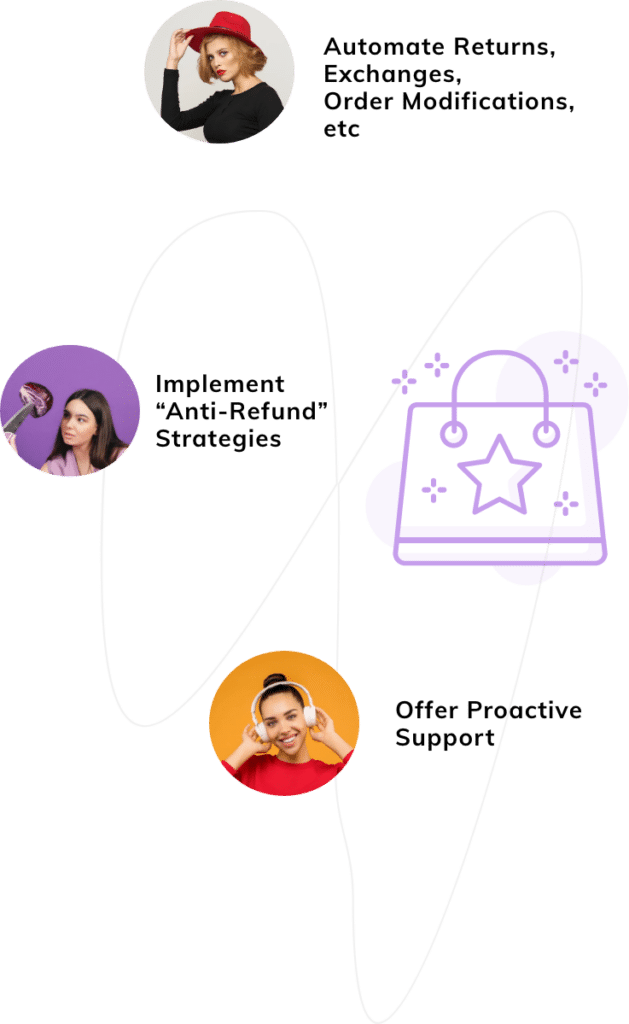Last Updated: April 2024
When it comes to NPS in eCommerce, understanding the significance of average NPS returns is crucial for your business growth. Your satisfied customers serve as living proof that your products are effective in meeting their needs.
However, throughout your typical customer journey, the satisfaction levels tend to fluctuate. This fluctuation stems from various factors such as convoluted checkout processes, unexpected shipping fees, or challenges in redirecting deliveries.
Your ability to track customer satisfaction through NPS in eCommerce is key to keeping your revenues growing. Indeed, a direct correlation exists between NPS in eCommerce and your financial success, making it a vital metric to monitor closely.
In the unending quest to engage customers and retain them longer, businesses worldwide use a variety of metrics. Business NPS is one of the most popular ones to measure customer satisfaction because of its simplicity and applicability across industries.
It can help you make better business decisions in terms of growing customer lifetime value and reducing attrition. It helps brands identify customers with a neutral and/negative perception about them and take timely measures to address their concerns.
 Fortunately, the NPS benchmark for e-commerce stores is quite achievable. The average NPS for the e-commerce industry is 62%, according to Simplesat’s 2024 e-commerce NPS benchmark report.
Fortunately, the NPS benchmark for e-commerce stores is quite achievable. The average NPS for the e-commerce industry is 62%, according to Simplesat’s 2024 e-commerce NPS benchmark report.
The education and training industry occupied the top spot with 71% average NPS. If you have been struggling to explain why customers are leaving you, the NPS score for your store could be an important indicator.
Net Promoter Score – Table of Contents
What is Net Promoter Score (NPS)
 NPS is widely used by many Fortune 500 companies around the world to measure customer loyalty. It was first developed by Fred Reichheld of Bain and Company in 2003 in partnership with Satmetrix, a customer analytics firm.
NPS is widely used by many Fortune 500 companies around the world to measure customer loyalty. It was first developed by Fred Reichheld of Bain and Company in 2003 in partnership with Satmetrix, a customer analytics firm.
What does NPS stand for in business?
NPS is a net promoter score KPI that measures customer satisfaction based on a customer’s response to the following question:
How likely are you to recommend us (brand) to others? It allows business leaders to better correlate customer satisfaction with how long they are likely to stay with a brand.
How It Works
In an e-commerce net promoter score survey, customers rate brands on a scale of 0 to 10. Respondents are then categorized into three classes- promoters, detractors, and passives.
Customers who rate you a 9 or 10 are called Promoters. These are the most loyal customers you have and are almost guaranteed to keep buying from you and tell others about your brand. That means easy word-of-mouth publicity for you.
Those with scores between 7 and 8 are the Passives. These customers are likely to leave if they found a product, comparable or better than yours.
They are easily swayed by low prices and are generally not responsive to the retention efforts made by brands. This category of customers is not included in the NPS score calculation.
Any rating below 6 is considered negative and these customers are categorized as Detractors. These are the most dissatisfied customers with a high probability of attrition.
They need to be kept engaged in order to avoid negative reviews and potential brand damage. Needless to say, these customers are likely to be the least happy with your product or service.
Now that we have a good understanding of the NPS scale and what each category represents, let’s take a look at the NPS formula to calculate NPS score.
NPS = % Promoters – % Detractors
 NPS is the difference between the promoters and detractors. It tells you how far you still have to go in terms of meeting customer satisfaction and reducing attrition.
NPS is the difference between the promoters and detractors. It tells you how far you still have to go in terms of meeting customer satisfaction and reducing attrition.
Also read: SaaS Customer Support: Complete Guide
Why You Should Measure NPS
The biggest advantage of NPS is its simplicity for both businesses and customers. If you have a better NPS target than that of your competitors, you have the edge in your product niche.
NPS can help you set progressive customer satisfaction goals so that you can improve your product or workflows consistently over a period of time. This is very critical in the market of today where new customers are harder to come by and the focus has clearly shifted to customer retention.
NPS can help you with developing new products based on direct customer feedback. Regularly assessing NPS KPIs is a great way to get insights into what customers really want, especially early in the customer lifecycle.
Your NPS score can help you predict and manage customer churn proactively. Rather than scrambling at the last minute to retain an unhappy customer, NPS can give you a heads-up on the customers that are most likely to leave in the foreseeable future.
How to Improve NPS
The NPS calculation does not take passives into account. This is because they are less likely to turn into promoters than detractors.
To convert detractors, you will need to progressively optimize the customer journey, from the initial phase of product discovery to onboarding. Leverage user analytics and social media to identify key customer pain points and implement an iterative improvement plan.
Shortcomings of NPS
Some experts contend that the NPS model is too simplistic as it does not always measure customer experience across the buyer journey. It is too focused on customer loyalty to give brands a holistic view of customer experience.
Relying too much on NPS can give brands a false impression that they are doing well with regard to customer satisfaction. A better alternative is to combine the insights you get from NPS with other modes of measuring customer satisfaction such as C-Sat and Customer Effort Score (CES)
Secondly, NPS is highly niche-specific. For example, if you are a retailer of premium wristwatches, your NPS score could be much higher than a brand selling handmade chocolates. You would have to compare yourself to a competitor selling the same product as you to be able to accurately assess if you are doing better or worse.
Last Words on Business NPS
Great customer service is at the heart of generating a good NPS score. What matters most is how you use the feedback provided by customers to improve your product. That can be a challenge if you are just starting out in business or do not have in-house data analytics expertise.
Hence, use Saufter to help you with AI-powered analytics and other support tools to provide enhanced customer service and achieve the best NPS scores.









